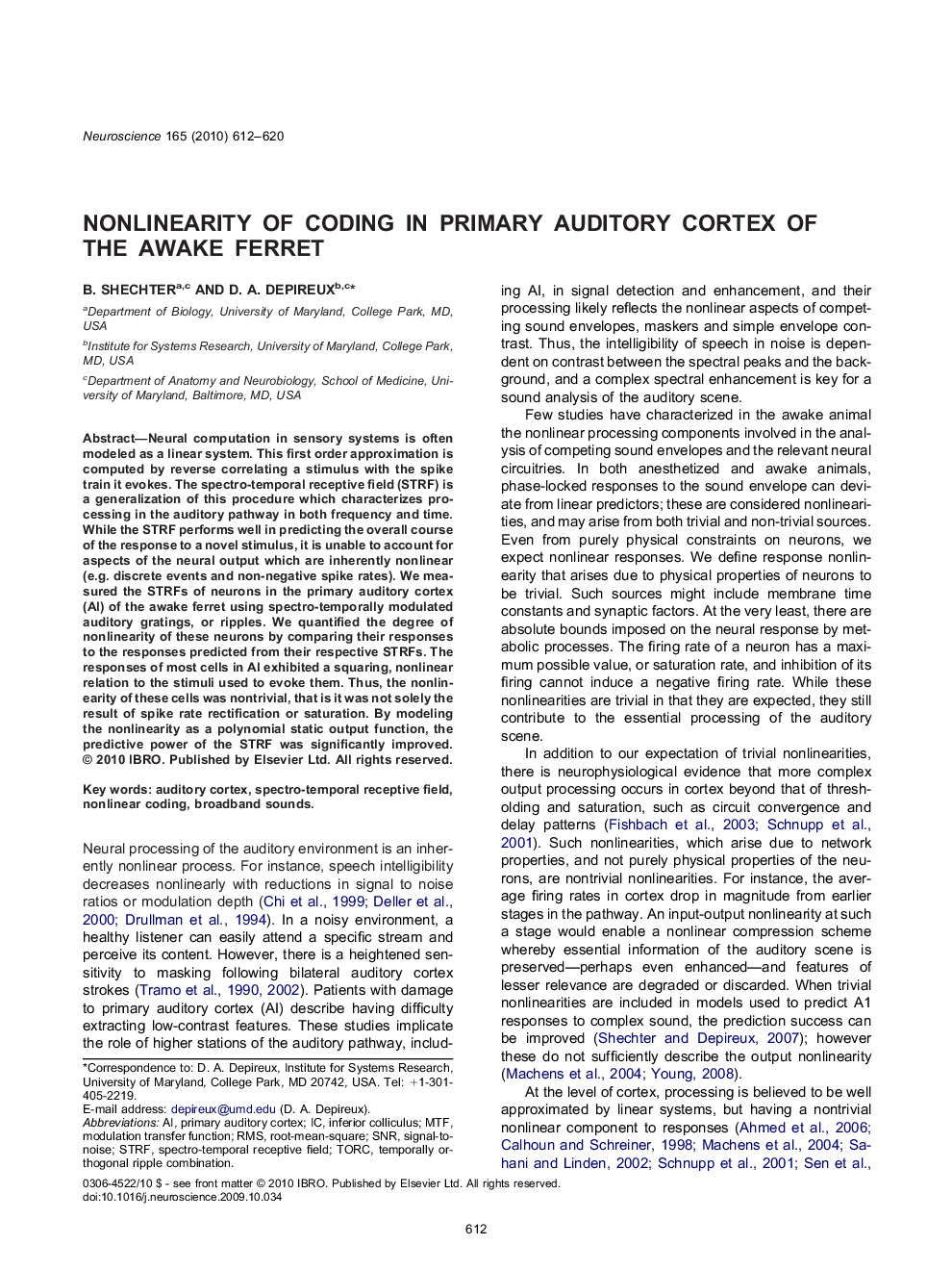| Article ID | Journal | Published Year | Pages | File Type |
|---|---|---|---|---|
| 4339715 | Neuroscience | 2010 | 9 Pages |
Neural computation in sensory systems is often modeled as a linear system. This first order approximation is computed by reverse correlating a stimulus with the spike train it evokes. The spectro-temporal receptive field (STRF) is a generalization of this procedure which characterizes processing in the auditory pathway in both frequency and time. While the STRF performs well in predicting the overall course of the response to a novel stimulus, it is unable to account for aspects of the neural output which are inherently nonlinear (e.g. discrete events and non-negative spike rates). We measured the STRFs of neurons in the primary auditory cortex (AI) of the awake ferret using spectro-temporally modulated auditory gratings, or ripples. We quantified the degree of nonlinearity of these neurons by comparing their responses to the responses predicted from their respective STRFs. The responses of most cells in AI exhibited a squaring, nonlinear relation to the stimuli used to evoke them. Thus, the nonlinearity of these cells was nontrivial, that is it was not solely the result of spike rate rectification or saturation. By modeling the nonlinearity as a polynomial static output function, the predictive power of the STRF was significantly improved.
